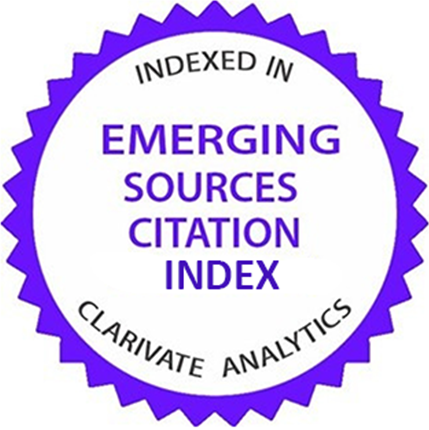Experiences of emergency medical services personnel about barriers and facilitators in prehospital childbirth missions in Iran: a qualitative study
Abstract
Objective: In Iran, the majority of emergency medical services (EMS) personnel are male; hence, one of their distinct and crucial missions is the prehospital childbirth mission, which might be significantly challenging for both personnel and patients. To obtain in-depth and authentic data, the present study was conducted to elucidate the barriers and facilitators of prehospital childbirth missions based on the experiences of EMS personnel.
Methods: A qualitative study employing conventional content analysis was conducted in 2023. Participants were selected through purposive sampling from EMS personnel willing to participate in the study and who have experiences with missions leading to childbirth. Data saturation was reached through in-depth semi-structured interviews with 14 participants. Data accuracy and credibility were confirmed using the Lincoln & Guba criteria.
Results: The results included two main themes including barriers and facilitators. Barriers were categorized into "gender-related barriers" and "personnel barriers." While "appropriate communication" and "efforts to preserve privacy" were the primary facilitator themes.
Conclusion: The findings revealed that EMS personnel face considerable barriers in the process of these missions. Therefore, for optimal performance quality in this prominent mission, it is recommended that clinical and educational policymakers consider actively recruiting female personnel, focusing on enhancing communication and practical skills and securing the patient's privacy. These approaches can result in childbirth missions with lower stress levels for patients, families, and personnel who provide the service.
2. Cash RE, Swor RA, Samuels-Kalow M, Eisenbrey D, Kaimal AJ, Camargo CA. Frequency and severity of prehospital obstetric events encountered by emergency medical services in the United States. BMC Pregnancy Childbirth. 2021;21:1-8.
3. Khazaei A, Esmaeili M, Navab E. The most and least stressful prehospital emergencies from emergency medical technicians’ view point; a cross-sectional study. Arch Acad Emerg Med. 2019;7(1).
4. Nishimwe A, Ibisomi L, Nyssen M, Conco DN. The effect of a decision-support mHealth application on maternal and neonatal outcomes in two district hospitals in Rwanda: pre–post intervention study. BMC Pregnancy Childbirth. 2022;22(1):52.
5. Ghocham SA, Valiee S, Kamyari N, Vatandost S. Level of self-care and patient care against COVID-19 among emergency medical services personnel; a cross-sectional study. Arch Acad Emerg Med. 2023;11(1).
6. Cheraghi F, Oshvandi K, Ahmadi F, Selsele OS, Majedi MA, Mohammadi H, et al. Comparison of nurses' and nursing students' attitudes toward care provision to opposite-gender patients. Nurs Midwifery Stud. 2019;8(2):104-11.
7. Sharifi S, Valiee S, Nouri B, Vatandost S, editors. Investigating patients' attitudes toward receiving care from an opposite‐gender nurse. Nursing Forum; 2021: Wiley Online Library.
8. Vatandost S, Oshvandi K, Ahmadi F, Cheraghi F. The challenges of male nurses in the care of female patients in Iran. Int Nurs Rev. 2020;67(2):199-207.
9. Miri K, Sabbaghi M, Mazlum SR, Namazinia M. The trend of change in the role of prehospital emergency medical services in Iran’s healthcare system: a situational analysis. BMC Emergency Medicine. 2023;23(1):99.
10. Graneheim UH, Lundman B. Qualitative content analysis in nursing research: concepts, procedures and measures to achieve trustworthiness. Nurse Educ Today. 2004;24(2):105-12.
11. Speziale HS, Streubert HJ, Carpenter DR. Qualitative research in nursing: advancing the humanistic imperative: Lippincott Williams & Wilkins; 2011:470.
12. Alqufly AE, Alharbi BM, Alhatlany KK, Alhajjaj FS. Muslim female gender preference in delaying the medical care at emergency department in Qassim Region, Saudi Arabia. J Family Med Prim Care. 2019;8(5):1658-63.
13. Younas A, Inayat S, Masih S. Nurses’ perceived barriers to the delivery of person‐centred care to complex patients: a qualitative study using theoretical domains framework. J Clin Nurs. 2023;32(3-4):368-81.
14. Mao A, Cheong PL, Van IK, Tam HL. “I am called girl, but that doesn’t matter”-perspectives of male nurses regarding gender-related advantages and disadvantages in professional development. BMC nursing. 2021;20(1):1-9.
15. Zeighami M, Mangolian Shahrbabaki P, Dehghan M. Iranian nurses’ experiences with sexual harassment in workplace: a qualitative study. Sex Res Social Policy. 2023;20(2):575-88.
16. Kingsberg SA, Schaffir J, Faught BM, Pinkerton JV, Parish SJ, Iglesia CB, et al. Female sexual health: barriers to optimal outcomes and a roadmap for improved patient–clinician communications. J womens Health. 2019;28(4):432-43.
17. Bhurtel A, Bhattarai PC. Environmental factors affecting training transfer among the instructors. Vocations and Learning. 2023;16(2):293-312.
18. Valiee S, Moradi Y, Vatandost S. Female patients’ experiences of barriers to communication with male nurses: a qualitative study. . J Qual Res Health Sci. 2022;11(4):218-23.
19. Svedberg E, Strömbäck U, Engström Å. Women's experiences of unplanned prehospital births: A pilot study. Int Emerg Nurs. 2020;51:100868.
20. Sistani M, Zandi KN, Manjazb F, Nasiri M, Khoshab H. The relationship between cultural sensitivity and levels of work interaction among emergency medical services staff in Iran. International Journal of Africa Nursing Sciences. 2023;19:100612.
21. Iott BE, Campos-Castillo C, Anthony DL, editors. Trust and privacy: how patient trust in providers is related to privacy behaviors and attitudes. AMIA Annual Symposium Proceedings; 2019: American Medical Informatics Association.
| Files | ||
| Issue | Vol 8 No 2 (2024): Spring (April) | |
| Section | Original article | |
| DOI | 10.18502/fem.v8i2.15461 | |
| Keywords | ||
| Childbirth Emergency Medical Services Prehospital Qualitative Study | ||
| Rights and permissions | |

|
This work is licensed under a Creative Commons Attribution-NonCommercial 4.0 International License. |










